Many pet owners, especially new pet parents, can be easily confused when they first adopt their pet and the time to feed them comes. This article will brief you on what food is the right food to buy for your pet.
Kitten to Cat
When is it officially time to stop telling people you have a kitten and accept the fact that your baby is all grown up? The answer to that is 12 months. After 12 months, your kitten is officially considered a cat, so you must start treating it like one. Your treatment of your cat would not change so drastically; for example, you would not stop cuddling them or making them sleep on your bed.
However, the one thing that will change is the food that you feed them. Kitten food is very different from cat food, and adult cats can not be fed kitten food. Many people are casual about this and do not pay it much attention or give it much importance, but the truth is it is a crucial factor to your cat living a long and healthy life.
The Exception
There are a few exceptions to the general 12-month rule. Larger breeds may take longer to grow into an adult cat–longer than 12 months fully. One example is the Maine Coon breed of cat, which can take anywhere from 18 months to 24 months to grow into a fully grown adult cat. Once it has completed this transition, the diet of this cat may be changed.
Why Differentiation Is So Important
Everyone makes a big fuss over differentiating cat and kitten food because there are actual detriments to feeding your kitten cat food or feeding your cat kitten food. Kitten food and cat food are made up of different ingredients, and each contains the right nutrients for each stage of life.
For example, kitten food contains a lot more fat because this is the growing age of kittens, and they need this nutrient to grow their cells and expand. However, this extra fat is not needed for fully-grown adult cats. It will just build-up, and if your cat does not get enough exercise, it may be harmful and make it obese, which will lead to many more health problems in the future, affecting its lifespan.
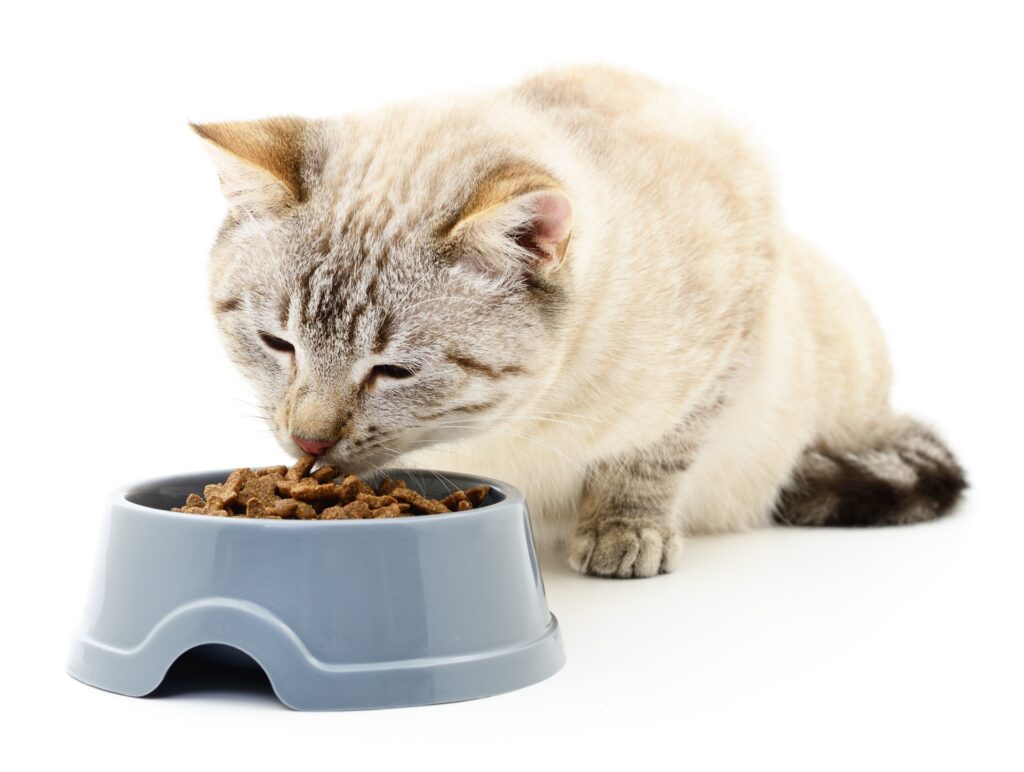
Different Labels
Kitten vs. cat food will always be labeled differently. Since kittens have more nutritional requirements to grow big into a full-sized cat, their food will always be labeled ‘for growth.’ So, if you see this label anywhere on the food you are planning to buy, it means that this particular packet of cat food is for kittens.
Food that has been manufactured and packaged for older cats is labeled ‘for maintenance.’ Through these labels, you may tell which one is kitten food or cat food. Another point to note is that manufacturers and the company that packages this food are required by law to declare what ages the cat food is meant for and the cat’s lifestyle.
So, instead of adding exact ages onto their packaging, manufacturers usually use these two labels, ‘for growth’ and ‘for maintenance.’ Cat owners can tell the two apart and choose the appropriate one for their pets.
Different Recipes
Both kitten food and cat food are available in a lot of different varieties. You can get different flavors, such as salmon, chicken, and tuna. You can get the food in different sizes, such as smaller or larger beads (in dry cat food). You can also get it in different textures, such as dry food or wet food.
However, a key difference between food meant for cats and kittens is that the two of them have different formulations. For example, the law requires kitten food to include more protein, fats, and a higher calorie count than cat food. This is because this food is meant to help these tiny animals grow, and these nutrients would be essential for their growth.
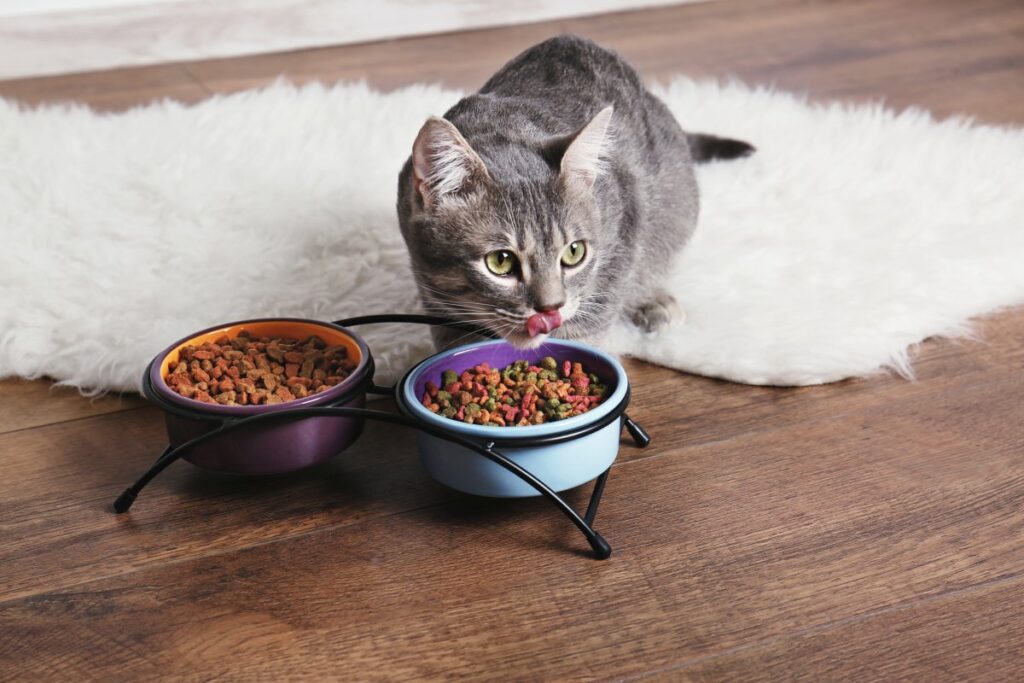
In contrast to this, adult cat food is required to contain fewer calories than kitten food. It also contains a variety of vitamins and minerals. These nutrients are essential to an aged cat because they will help keep the bones strong and help the cat age well. Many problems may arise in a cat’s health due to aging.
They may grow weaker, their brain may not stay as sharp, and they may lose their hearing and eyesight. To tackle these problems, the food they eat must contain essential nutrients so that their health can stay in top shape and they do not have to face these illnesses.
The Importance of Protein
Protein is essential when it comes to feeding a kitten. Kittens need a high level of this nutrient so that they can gain overall strength. It helps build muscles and maintains good eyesight and hearing. It is advisable to feed your kitten food that contains about 30%-50% protein so that they can stay healthy.
Anything less than this, and they will not be able to grow properly. However, also note that feeding your kitten anything more than the recommended amount stated above will not help your kitten gain any additional benefits.
They will not become super strong or build stronger muscles. Instead, it can be unhealthy for your kitten. In contrast, cat food generally contains about 25-40% protein, which is less than the required amount for kittens. Thus, feeding your kitten cat food is not a great idea.
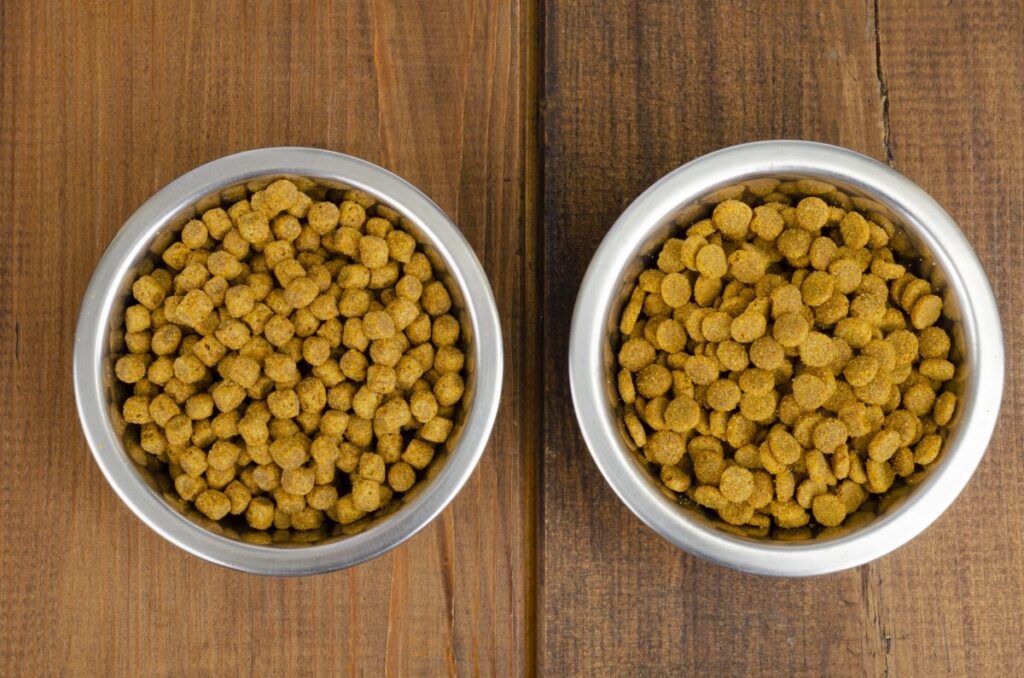
Omega 3 and Omega 6
Omega 3 and omega 6 are very important for your kitten’s needs. They need this when they are in the growing stage to grow into fully functioning adult cats. These fats help a kitten’s organs function properly and maintain a healthy and strong immune system. They also help reduce inflammation in kittens, which can stop a health issue from developing right in its tracks.
However, kittens need a much higher percentage of fat than adult cats. Adult cat food does not have any set requirement or upper and lower limit prescribed in official state guidelines. Manufacturers of adult cat food do not have to put in a specific amount of fat in the adult cat food they produce, unlike the kitten food guidelines.
It is not safe to feed your kitten cat food because you do not know for sure how much fat is being incorporated into their diet. The best kitten food encompasses the right amount of fat and protein, as well as all other essential nutrients.
Newborn Kittens
Kittens that have just been born can not be fed kitten food. They will mostly live off of their mother’s milk, where it is accessible. They may be slowly weaned off their mother’s milk once they are about 3 to 4 weeks of age.
The transition to kitten food can then start. However, as they do not have very strong gums and jaws at that point, the food given to them must be wet kitten food. If you are planning to give your young kitten dry food, perhaps wet it first beforehand. This can be done with the use of water or milk. However, if you are using milk, do not put too much of it. A little goes a long way.
Give your kitten adult cat food before they have matured to at least a medium-sized cat which should be around 12 weeks. You must not give them cat food.
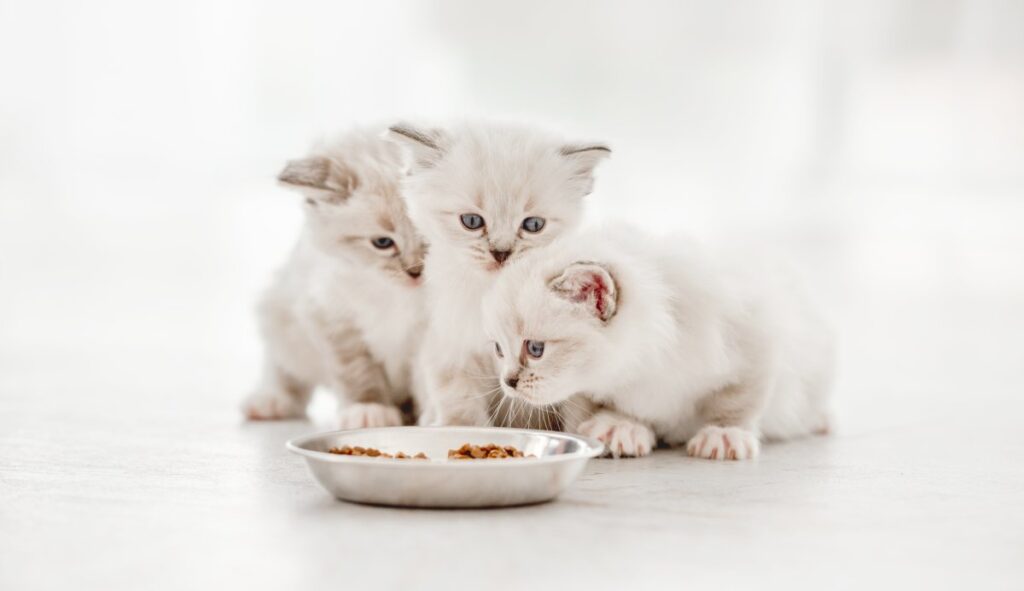
Switching to Adult Food
Eventually, you will have to switch your kitten’s diet to cat food at one point. This is because kitten food contains a lot of nutrients that fully grown cats do not need. They may gain unnecessary weight, which can affect their health. Another reason is that kitten food contains DHA. DHA is a nutrient that helps strengthen the mind and makes it sharper.
It also encourages vision development, which makes kittens’ vision sharper so they can see better. Their vision stays unaffected for a longer period, even once they grow old. Kitten food also contains many nutrients that help support the immune system and make it stronger.
However, once cats grow older, they do not need all those extra nutrients. Their immune system has already grown to a point where they can stay healthy on their own and fight off bacteria, viruses, and other illnesses. Adult cats are often less energetic too.
They don’t play around or run around as much as kittens do. So, these extra nutrients and a high amount of calories for every meal will not be used up as they would be in a kitten. This may promote health problems for your adult cat.
The Switching Process
It is not advisable to make your cat quit their kitten food, just cold turkey. It is always better to wean them off of it, just like you should wean them off of their mother’s milk and on to kitten food.
To make the switch a bit easier, spread the transition to over ten days. This will also prevent the possibility that your cat’s stomach will get upset. It may also help them mentally prepare themselves because now they have to eat a different kind of diet.
On the first two days, give your kitten (who is now a newly adult cat) a bowl containing 75% of their usual kitten food and 25% of the new adult cat food. On the third and fourth days, split the food in the bowl into two halves. Half of the food will be kitten food, and half of it will be adult cat food.
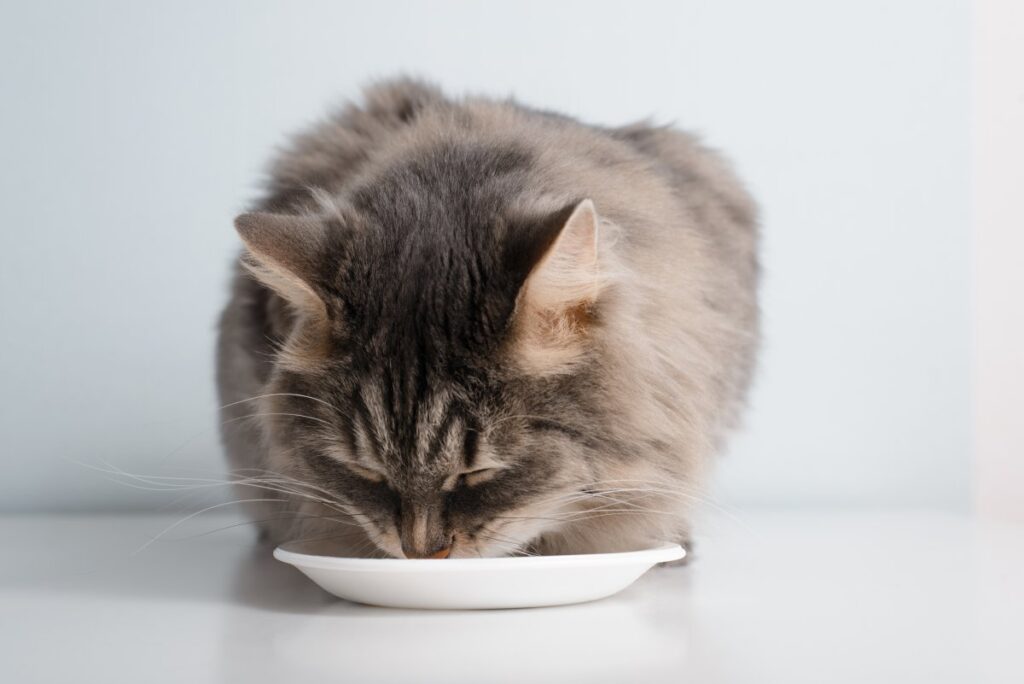
On the fifth day, all the way until the seventh day, serve your cat a bowl containing 75% of adult cat food and 25% of kitten food. Starting from the eighth day, only serve your cat with adult cat food.
If your cat has difficulties transitioning to the new adult cat food and refuses to eat it or eats very little out of her bowl, give it some more time with the transition. Add in a little bit of kitten food to make the transition a bit easier.
Availability
Cat food is often much more readily available. There are fewer stores, even from the larger ones, that stock up on kitten food. In comparison, cat food is available at every grocery store you go to, especially at pet stores.
You will find a wide variety of adult cat foods that are available, with different ingredients, flavors, textures, and options. Even though packaged kitten food is not readily available in many places, it is still helpful to keep in mind that feeding kittens cat food is not a good idea.
It will not sit well with them, and they may not even digest the food properly, which may cause them to throw up. To avoid a whole list of problems that can result from feeding your kitten adult cat food, it is a good idea to either source kitten food from elsewhere if it is not available in stores close to you, or you can make food for your kitten yourself at home.
Conclusion
There are many reasons why a kitten should not eat cat food and vice versa. Kittens eating cat food will not get all the nutrients and right amount of protein and fat needed for the healthy growth of the mind and body.
Feeding a cat kitten food is not healthy either, as the fat and protein content is too high for a cat’s healthy diet and may lead to health problems, such as obesity. Thus, it is best to transition your kitten to adult cat food at the right time, usually after 12 months.

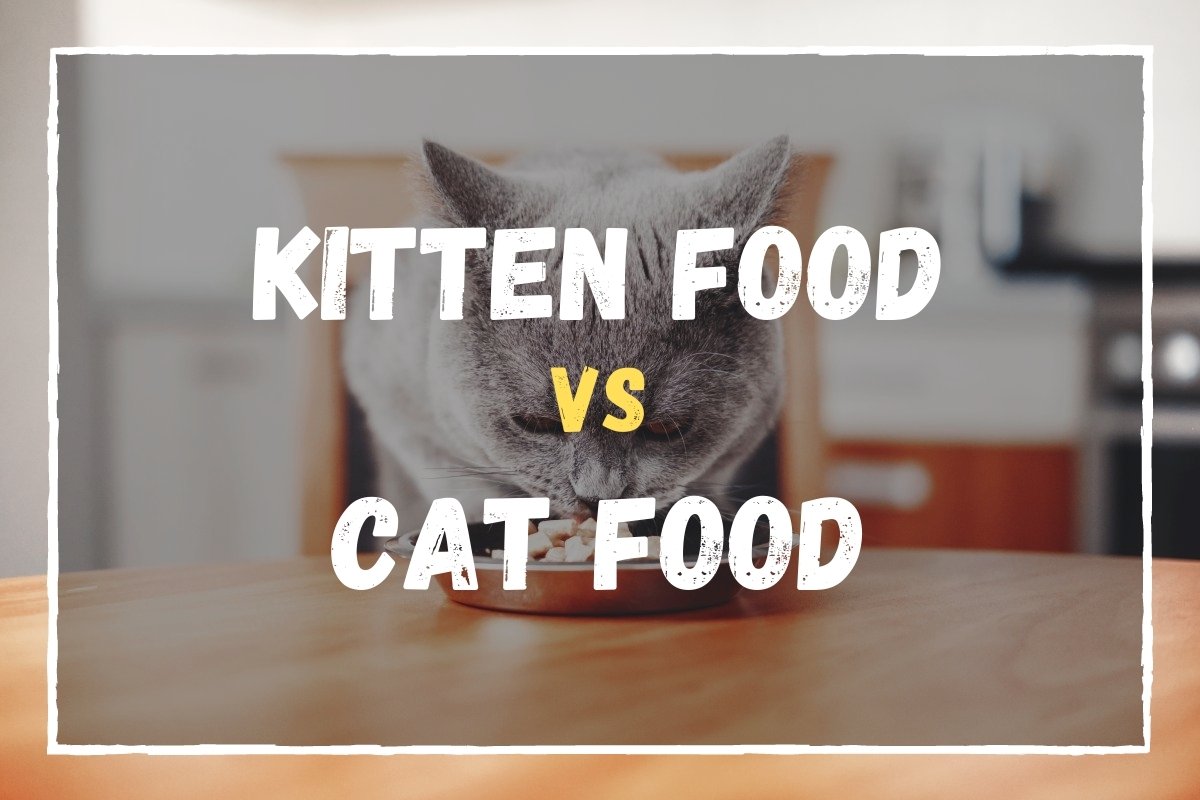
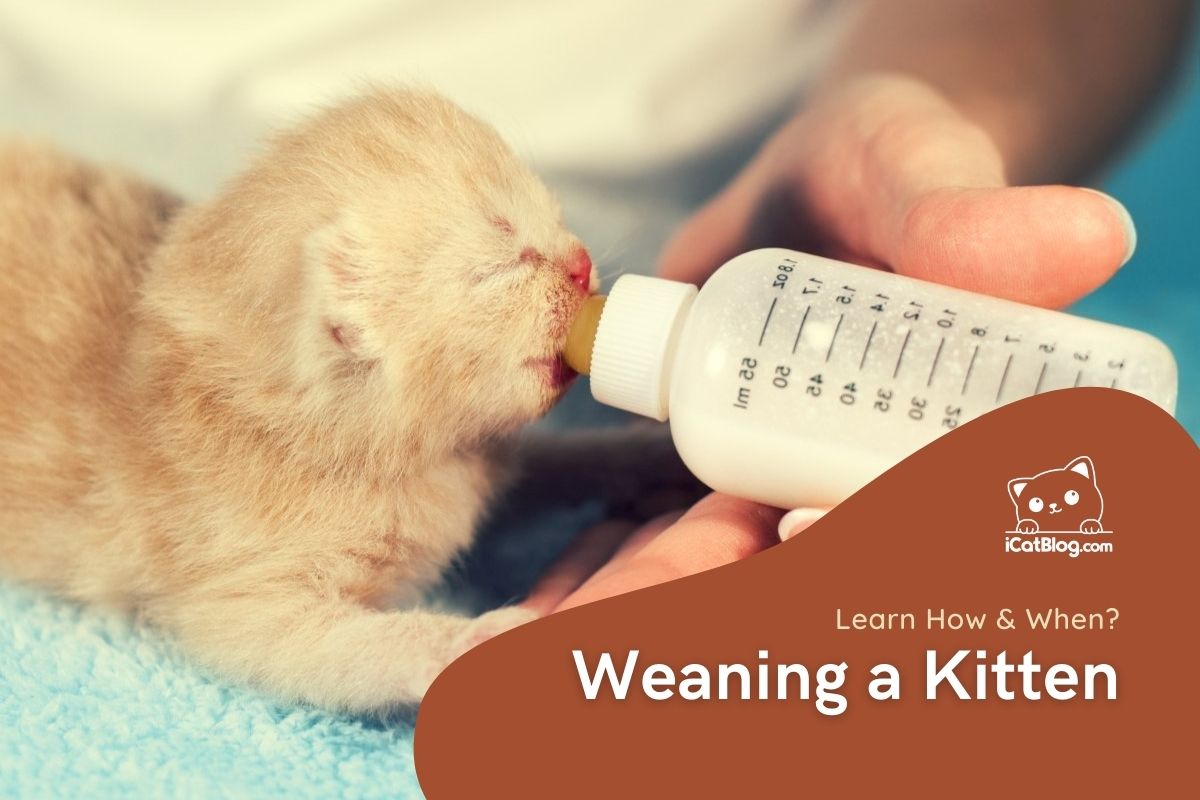
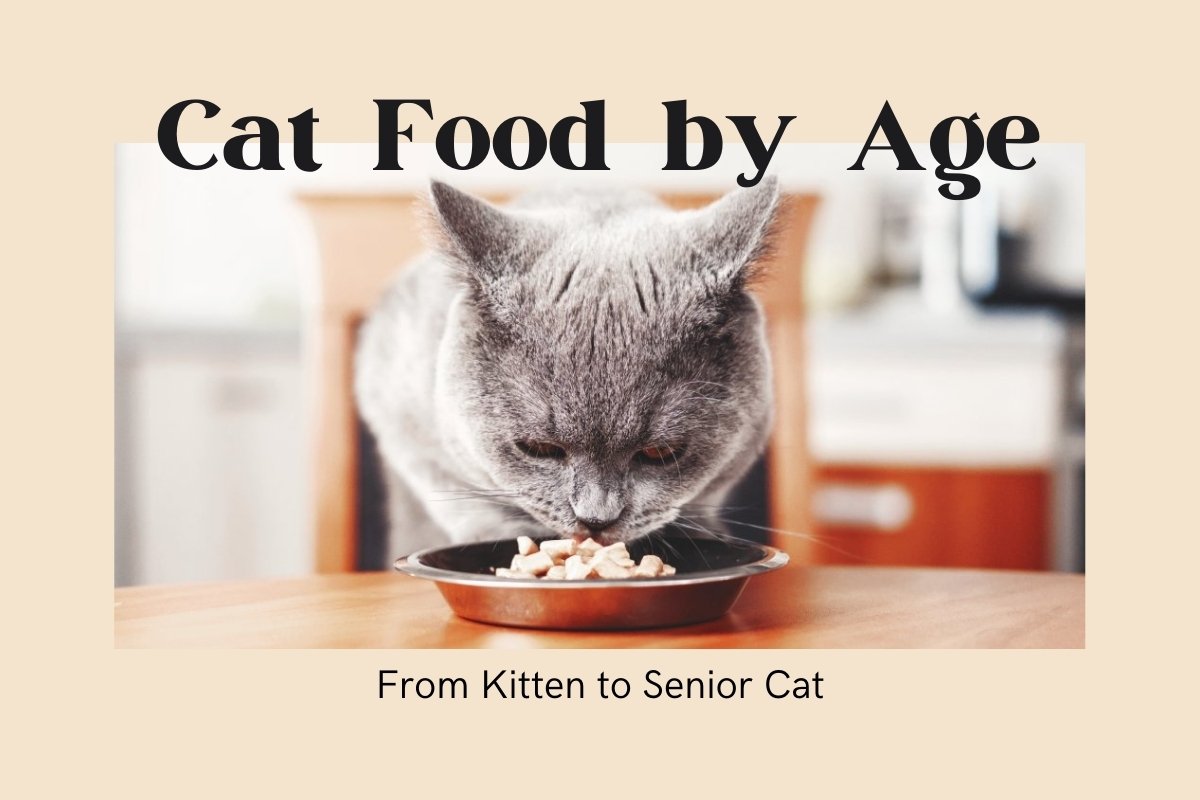
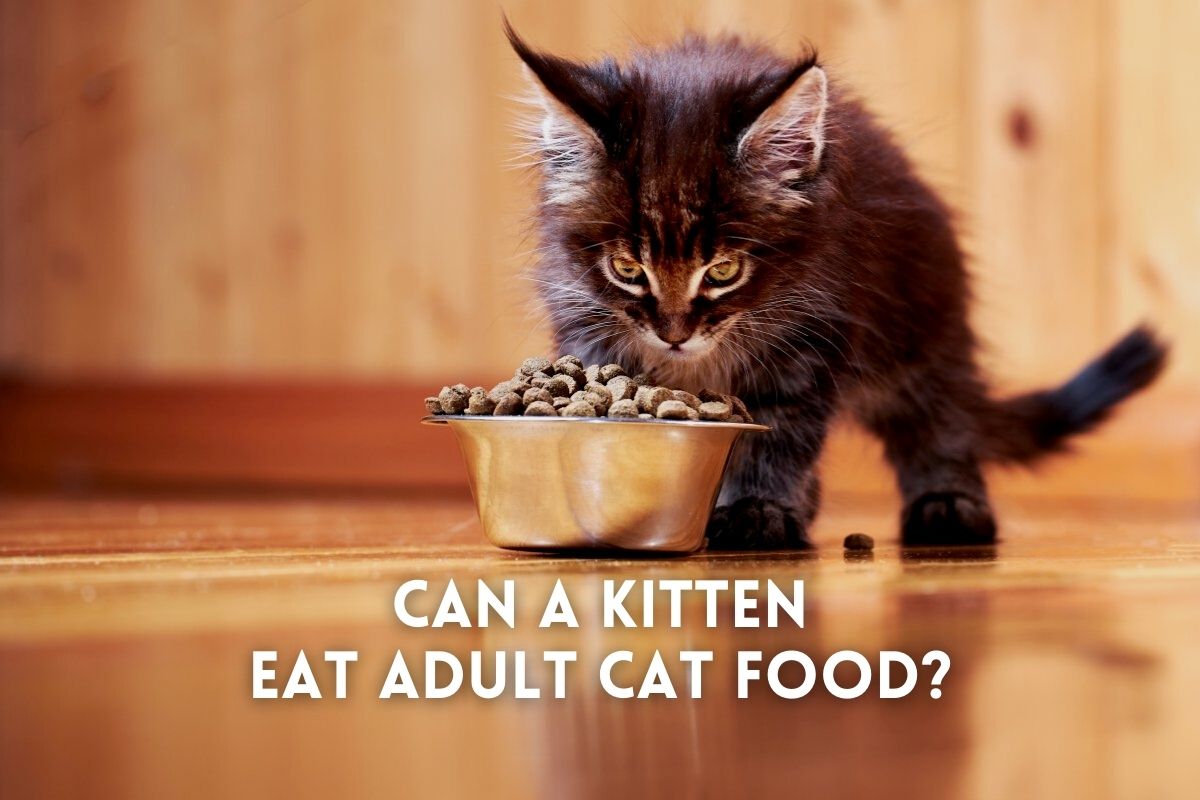
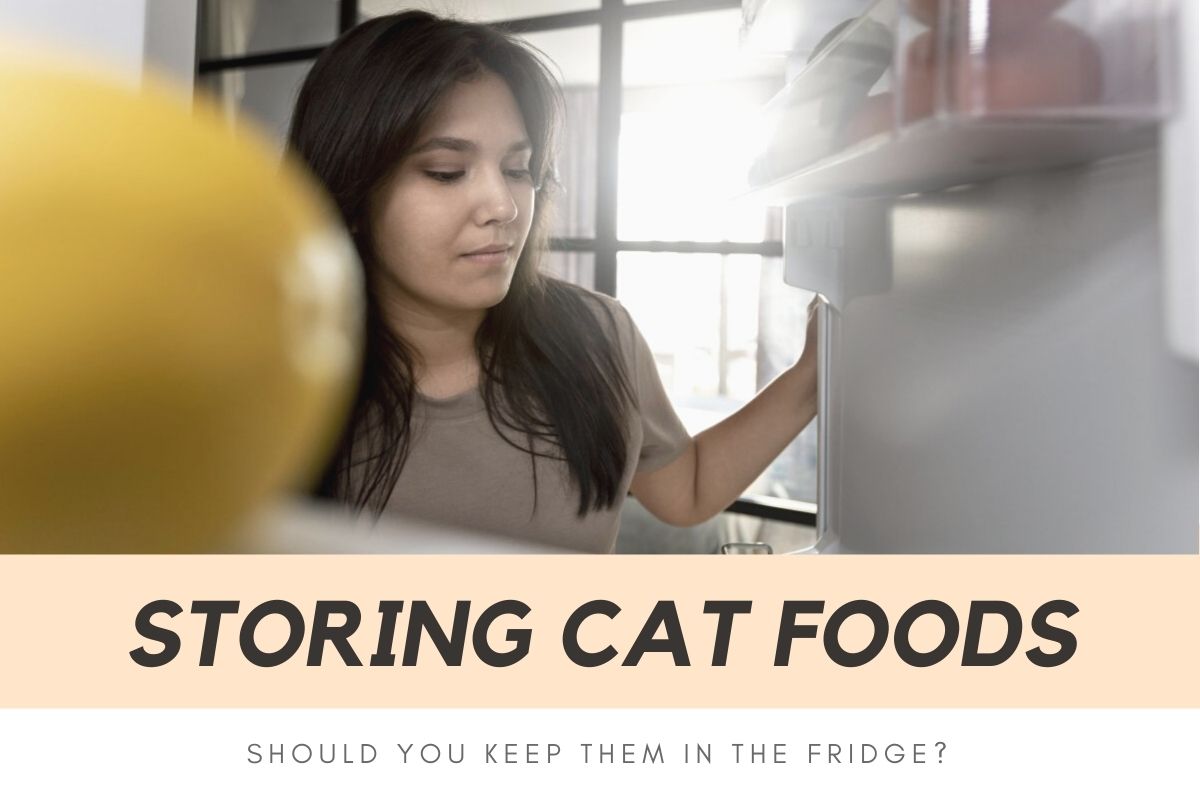
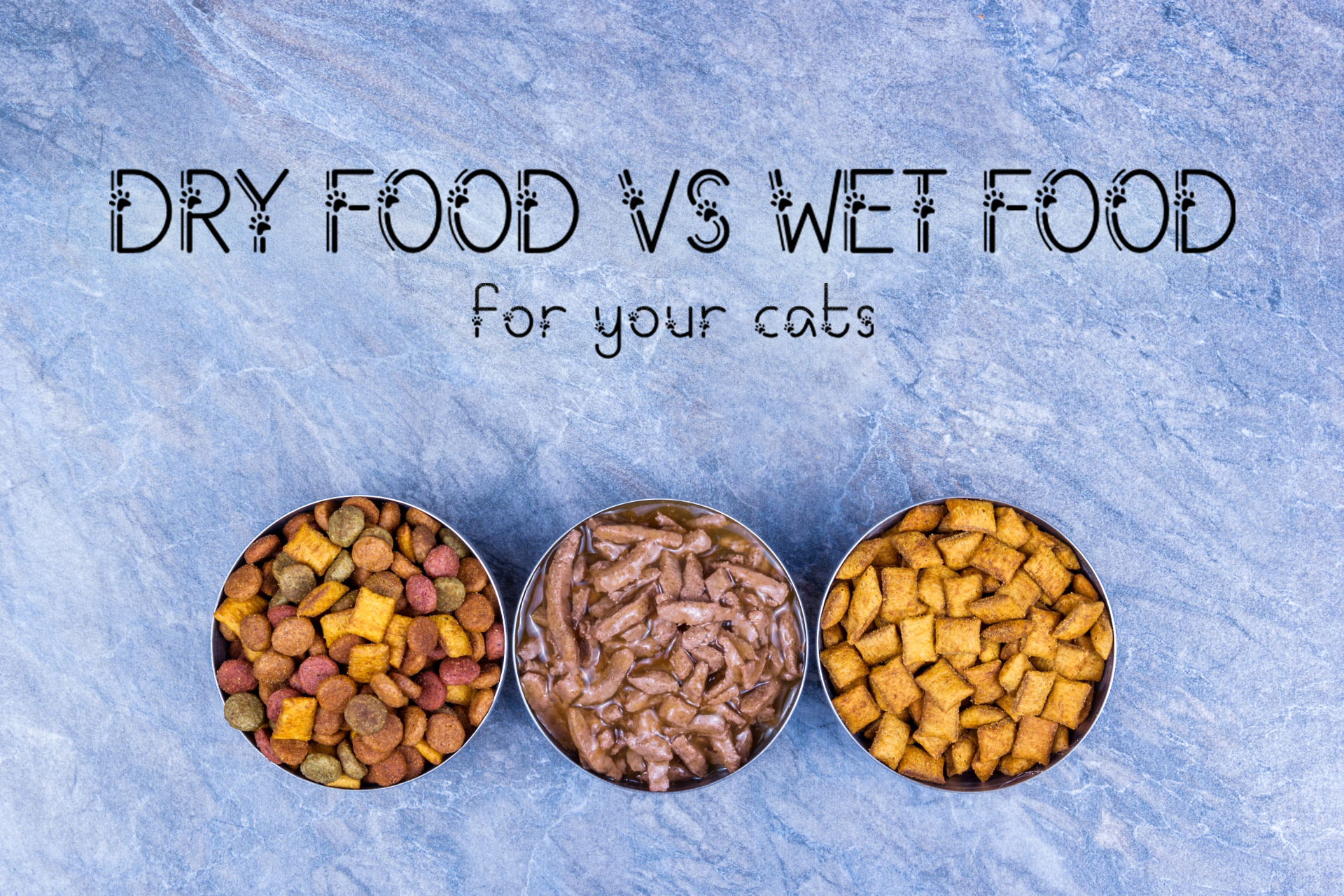
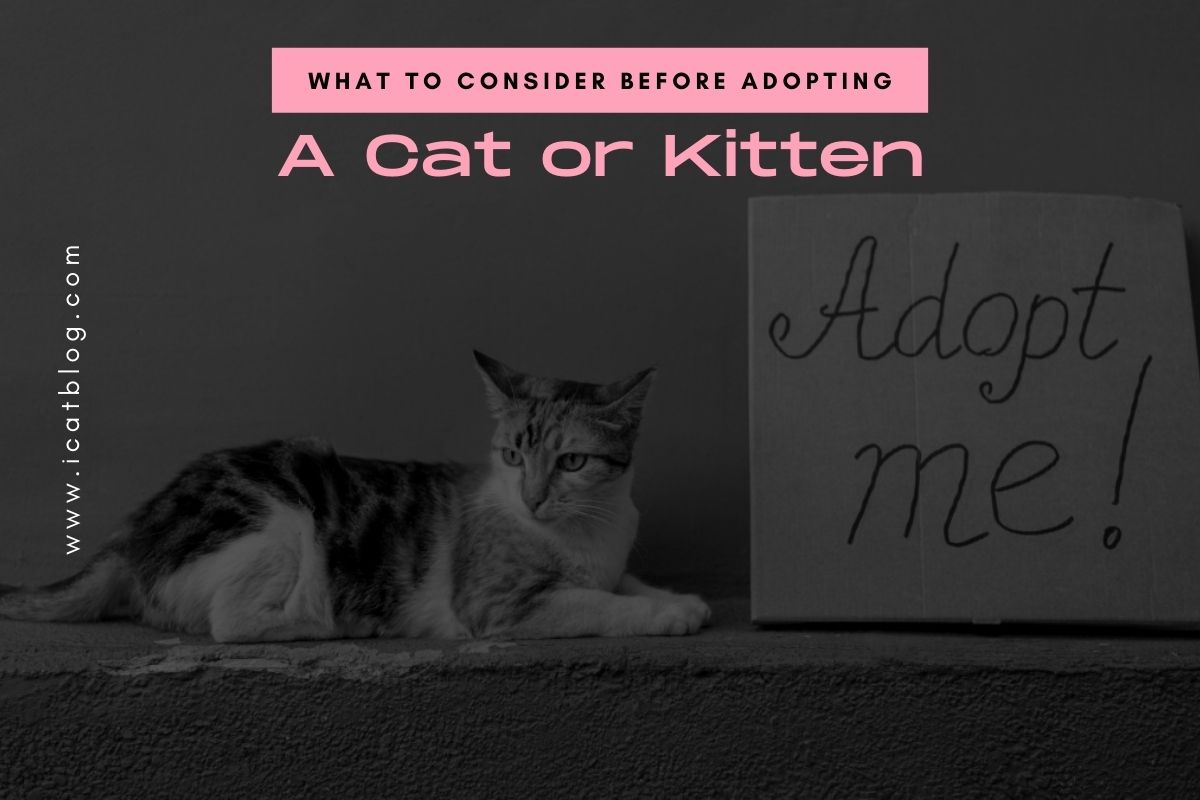
3 comments